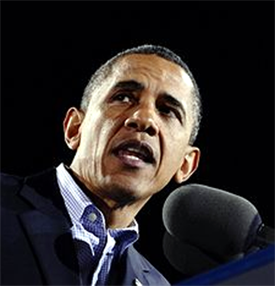Apr 16, 2024
Apr 16, 2024
 President Barack Obama possibly chastened by a hard domestic election campaign flies to Mumbai on 6 November. Much is being made of the visit in India as well as the US given the significance of the Worlds most powerful President visiting an emerging regional power which has similar value systems espoused in a modern democracy. Congruence of interests in the years ahead would imply proximate strategic relations between the two countries. One area where there is unlikely to be much progress is on the defence cooperation front, ironically because of a, “communications” mismatch despite the excellent rapport between Dr Man Mohan Singh and President Obama.
President Barack Obama possibly chastened by a hard domestic election campaign flies to Mumbai on 6 November. Much is being made of the visit in India as well as the US given the significance of the Worlds most powerful President visiting an emerging regional power which has similar value systems espoused in a modern democracy. Congruence of interests in the years ahead would imply proximate strategic relations between the two countries. One area where there is unlikely to be much progress is on the defence cooperation front, ironically because of a, “communications” mismatch despite the excellent rapport between Dr Man Mohan Singh and President Obama.
The stakes in the field of defence are particularly high for US companies facing a reduction in the budget size in the West. However India has already ordered 6 C 130J transport and is looking for 12 P 8 I Long Range Maritime surveillance aircraft. Boeing is hoping for a C-17 Globe master-III transport aircraft deal and has also provided information to the Indian Navy and the Indian Air Force about an Airborne Early Warning and Command (AEW&C) system based on an advanced query in the form of an Request for Information (RFI). Boeing and Lockheed Martin are also contenders in the Medium Multi Role Combat Aircraft for the Indian Air Force, a deal likely to be in excess of $ 10 billion.
However lack of a communications security agreement would mean that much of the equipment that India is likely to buy through the Foreign Military Sales route from the United States is not likely to generate a degree of interoperability with the US forces in the future. The stumbling block is India’s reluctance to sign the Communications Interoperability and Security Memorandum of Agreement (CISMOA) and the Basic Exchange and Cooperation Agreement for Geo-spatial Cooperation (BECA) which is mandated by the US arms sales laws.
"Government had asked us about our opinion on these agreements and we told them that this will not make any substantial difference to our operational capabilities," India’s Air Chief Naik said at a event in New Delhi during the month. Officials also remain dismissive stating, “The agreements don’t really matter, because India can approach Israel or France for it. But, it could get more expensive once you replace military-grade equipment with commercial-grade,” sources told Economic Times.
More over it is believed that the C 130J agreement signed with Lockheed Martin does not include the following communication equipment, as per the Live fist blog:
Indian planners feel that signing the CISMOA may constrain the autonomy for launch of independent operations as the relevant clause of the agreement states, “Transfers of U.S. C4ISR capabilities to countries and international organizations must support a U.S. Combatant Commander’s (COCOM) interoperability requirements or otherwise clearly benefit U.S. policy objectives (e.g., telemetry test data transmissions for FMS aircraft transfers). A purchaser’s desire to be interoperable with the United States is insufficient justification for release”. It is unlikely that the Indian government or the military brass will accept to be restrained by these stipulations.
Indian defence planners are willing to possibly crank in Israeli or French communications equipment on US platforms to maintain their autonomy thereby possibly making the best of both the Worlds, US long range platforms and advanced communications equipment from others. India has been adopting this model in the past with the current AWACS held by the Indian Air Force based on a Russian IL 76 platform and Israeli command and control and early warning equipment.
At the same time expectations of major defence acquisitions being inked during the visit of the US President to India expressed in various quarters from time to time may seem out of place. As far as the Presidential visit is concerned, this would only provide the general direction in which the relationship will be move rather than being a forcing function for inking defence acquisition agreements for specific items such as the C 17. Thus expectations should not be overly optimistic in this direction though the President may make a general pitch for US companies and the Indian leadership may respond ambivalently this will largely be a function of the relevant defence officials on both sides along with private companies involved and the three services rather than for the President.
31-Oct-2010
More by : Col. Rahul K. Bhonsle

|
good |